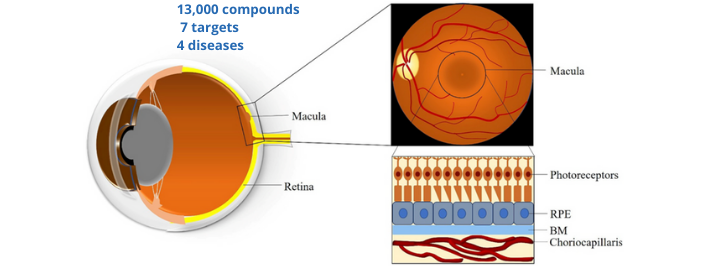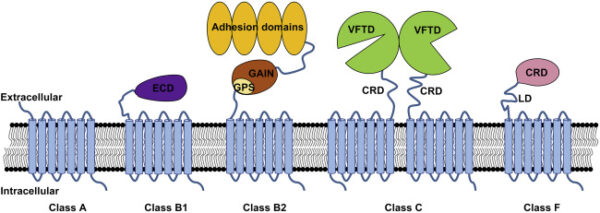The Ocular Diseases Small Molecules Library comprises a vast array of small molecules with unique chemical structures and properties. Some key components of the library include:
Antiglaucoma Agents: This subset of compounds focuses on managing intraocular pressure, a key risk factor for glaucoma. Small molecules in this category include prostaglandin analogs, adrenergic agonists and antagonists, carbonic anhydrase inhibitors, and Rho kinase inhibitors.
Anti-angiogenic Agents: Targeting the abnormal growth of blood vessels in ocular diseases, such as AMD and diabetic retinopathy, these compounds inhibit angiogenesis and reduce the risk of vision loss. Examples include vascular endothelial growth factor (VEGF) inhibitors and integrin antagonists.
Anti-inflammatory Agents: Designed to alleviate inflammation-related damage to ocular tissues, these molecules target conditions like uveitis and dry eye disease. They may include corticosteroids, non-steroidal anti-inflammatory drugs (NSAIDs), and immunomodulators.
Antioxidants: Compounds with antioxidant properties that protect ocular tissues against oxidative stress and damage are included in this category. Antioxidants such as vitamins C and E, lutein, zeaxanthin, and coenzyme Q10 are potential components of the library.
Lipid-lowering Agents: These compounds are focused on managing lipid abnormalities that contribute to ocular diseases like retinal vein occlusion. Lipid-lowering agents, such as statins, play a role in reducing the risk of disease progression.
Applications of the Ocular Diseases Small Molecules Library:
The compounds within the Ocular Diseases Small Molecules Library offer wide-ranging possibilities for ocular disease research and therapy:
Drug Discovery and Development: The library serves as a valuable resource for identifying and developing novel ocular disease treatments. Researchers can screen, modify, and optimize the small molecules present in the library to enhance efficacy, improve delivery methods, and minimize side effects.
Therapeutic Interventions: Small molecules from the library hold potential for both systemic and local administration, enabling tailored therapeutic approaches for different ocular diseases. These molecules can be formulated as eye drops, intravitreal injections, or sustained-release implants to provide targeted treatment options.
Disease Mechanism Studies: By utilizing the small molecules in the library, researchers can gain insights into the molecular mechanisms underlying ocular diseases. These compounds can enable the study of disease pathways, identification of new drug targets, and elucidation of disease progression mechanisms.
Personalized Medicine: The Ocular Diseases Small Molecules Library can facilitate personalized treatment approaches by allowing the selection of appropriate compounds based on individual patient characteristics, optimizing therapeutic outcomes, and minimizing adverse effects.
Combination Therapies: Small molecules from the library can be combined with other treatment modalities, such as gene therapy or cell-based approaches, to enhance therapeutic efficacy and potentially provide synergistic effects in ocular disease management.




